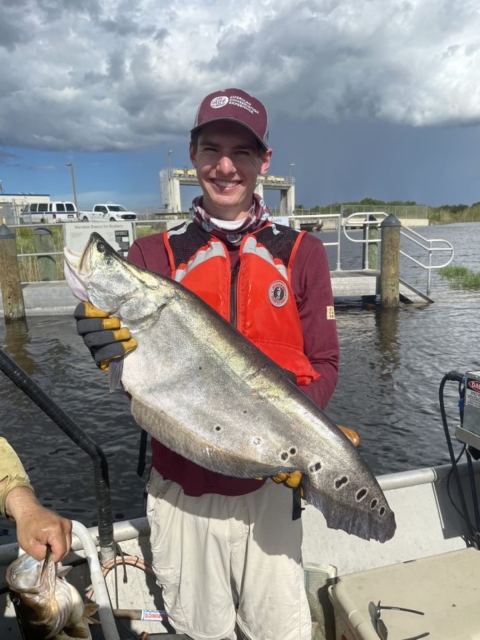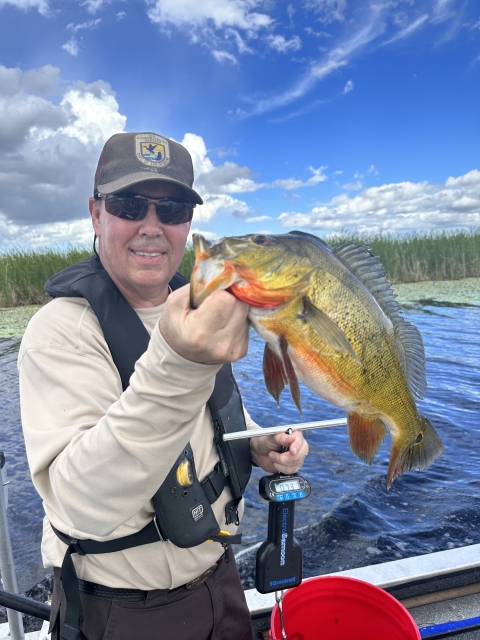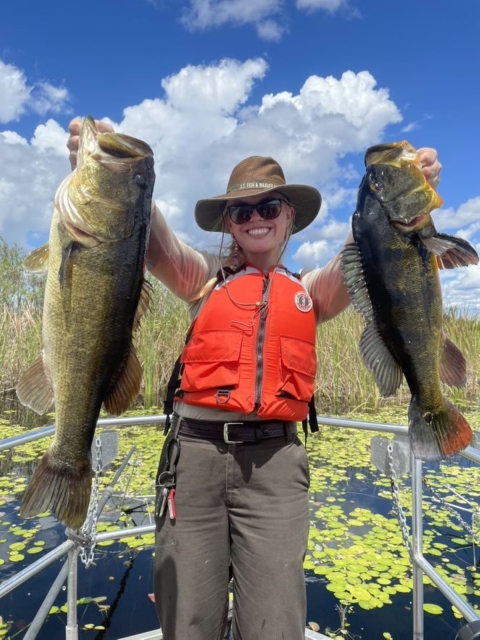During the week of September 18, 2023, Region 4 Fish and Aquatic Conservation (FAC) Program staff from the Peninsular Florida Fish and Wildlife Conservation Office (FWCO) and the Welaka National Fish Hatchery, with support from the National Wildlife Refuge (NWR) System Inventory and Monitoring Program, completed the first part of a two-part comprehensive fish inventory assessment of the Arthur R. Marshall Loxahatchee NWR. This refuge protects 145,188 acres, or 226 square miles, of Everglades ecosystems including a mosaic of wet prairies, sawgrass ridges, sloughs, tree islands, cattail communities, and a 400-acre cypress swamp. The last comprehensive fish inventory assessment of Loxahatchee NWR was completed by Region 4 FAC in 2011.
The week-long electrofishing surveys, focused on of the Refuge’s 57-mile-long perimeter canals (L-7, L-39 and L-40), were conducted using three FAC electrofishing boats with the goal of determining the population structure structure
Something temporarily or permanently constructed, built, or placed; and constructed of natural or manufactured parts including, but not limited to, a building, shed, cabin, porch, bridge, walkway, stair steps, sign, landing, platform, dock, rack, fence, telecommunication device, antennae, fish cleaning table, satellite dish/mount, or well head.
Learn more about structure of native and nonnative fish species inhabiting the waters of the Refuge. The recently completed surveys captured fishery data during South Florida’s wet season with part two planned for early 2024 with the goal of capturing data during South Florida’s dry season. For this survey the perimeter canals at Loxahatchee NWR were broken down into ninety-four 1-Km segments with survey locations randomly selected for each day. During this part of the study forty-six 1-Km sections were surveyed, representing over half of the Refuge’s perimeter canals. Information on water quality parameters, habitat characteristics, and morphometric data on all fish were collected. All native fish were released unharmed after data collection while non-native exotic species were removed from the Refuge. Following this first week of electrofishing over 500lbs representing 9 species of non-native fish were removed from Refuge waters. The results from this study will help determine changes in native and non-native fish populations compared to the last comprehensive survey from 2011.
As these surveys are labor intensive, and provide opportunities for cross-program training, FAC staff received assistance from Loxahatchee NWR staff, volunteers, and American Conservation Experience (ACE) interns, staff from Florida Ecological Services Offices (Gainesville, Jacksonville, and Vero Beach), as well as Florida Fish and Wildlife Conservation Commission.








